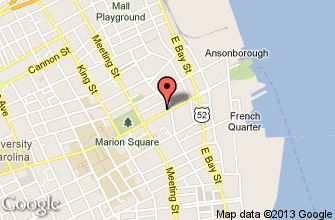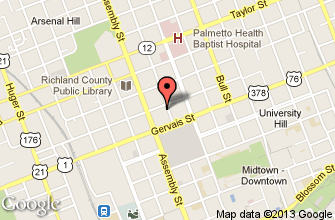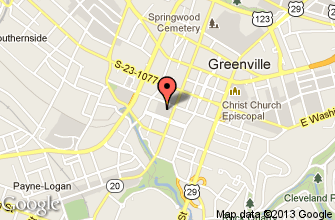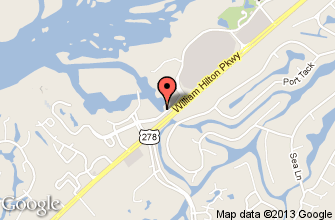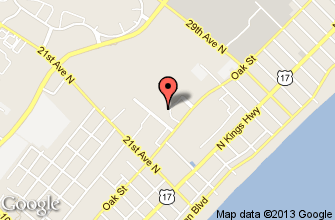News Room
PrintRisks of Cover Page Provisional ApplicationsAuthored by: Douglas W. Kim and Seann P. Lahey
September
29, 2017
Since June 8, 1995, the United States Patent and Trademark Office (USPTO) has offered inventors the option of filing a provisional patent application. These applications are typically used as a faster and lower-cost first patent filing in the United States intended to help preserve domestic and international patent filing rights, while also providing an earlier effective filing date for a later filed non-provisional patent application. Provisional applications require a description of the invention and drawings (if any) but do not require a set of patent claims. Additionally, the status "Patent Pending" may be used in connection with the description of the invention once a provisional application if filed.
The USPTO has issued its 2016 Performance and Accountability (2016 PAR). The number of issued patents that claim priority from the U.S. provisional application is on the rise from about 15% to 20% in 2005 to between 27% to 32% in 2016[1].
Since the United States has moved to a “first to file” country, filing a provisional patent application that adequately describes the invention can establish priority and satisfy the need to file as soon as reasonably possible under the “first to file” rules. However, there are risks with improperly prepared provisional applications.
To actually be useful (and valid), the provisional patent application needs to satisfy the legal requirements of “Section 112,” which currently states:
These legally deficient provisional applications may have been prepared by the inventors themselves without the guidance of legal counsel, prepared by discount third party legal services or even prepared by patent attorneys offering discount services and preparing “thin” applications intended to save their clients’ money. One technique to “save money” is to take a description provided by the inventor, make few, if any, changes, add the provisional application filing cover sheet, and file the provisional patent application with the USPTO. However, these “cover sheet provisional applications” may omit the necessary communications and discussions between the patent attorney and the inventor, leading to a lack of sufficient technical detail in describing the invention needed to satisfy Section 112.
This risk is fully illustrated in the case where Leader Technology (“Leader”) sued Facebook over United States Patent 7,139,761[4]. The following summarizes principal events considered by the jury:
- January through December 2002 – Leader offered the invention for sale and used the invention in public.
- December 11, 2002 – Leader filed a provisional patent application 60/432,255.
- December 10, 2003 – Leader filed a non-provisional application, 10/732,744, claiming priority on the above provisional application.
- November 21, 2006 – Leader received United States Patent 7,139,761 (’761 patent) from its non-provisional application.
- Leader sued Facebook for patent infringement based on the ’761 patent.
Under United States Patent Law, a patent is invalid if "the invention was . . . in public use or on sale in this country" more than one year prior to the date the patent application is filed.[5] "Whether a patent is invalid for public use or sale is a question of law, reviewed de novo, based on underlying facts, reviewed for substantial evidence following a jury verdict."[6] At trial, the jury found that Facebook had literally infringed each and every element of at least one claim of the ’761 patent. Further, the jury found that the ’761 patent was not invalid in light of the prior art asserted by Facebook.
However, Leader did not win the case. The jury went on to find that the ’761 patent was invalid because it was offered for sale and in public use more than one year prior to the filing of the application underlying the ’761 patent.
At this point, it is fair to wonder how the jury reached such a conclusion because the earliest public use or offer for sale was January 2002 and the provisional application, used as a priority document for the non-provisional application, was filed December 11, 2002. The time span between the earliest public use or offer for sale and the provisional filing date is not more than a year. The reason for this apparent contradiction is that the jury found that the provisional patent application did not fully disclose each and every element of the infringed claims of the ’761 patent. Therefore, Leader could not rely on the provisional filing date for priority and the actual filing date became December 10, 2003. The time between January 2002 and December 10, 2003, is more than a year resulting in the ’761 patent being held invalid.
What is unfortunate for Leader is that if the invention was offered for sale and in public use between January and December of 2002, there should have been sufficient technical details available so the provisional application would have had sufficient technical disclosure to operate as a priority document. It should be obvious from the Leader v. Facebook case that provisional applications should not be taken lightly and should be prepared by an experienced patent attorney or patent agent. Meeting the requirements of Section 112 can prove critical to future efforts to enforce an issued patent. As experienced by Leader, “saving money” on a provisional application can, in fact, have a very high price.
[1] https://patentlyo.com/patent/2016/12/provisional-application-filings.html.
[2] Alcon Research Ltd. v. Barr Labs., Inc., 745 F.3d 1180, 1190 (Fed. Cir. 2014)
[3] Ariad Pharm., Inc. v. Eli Lilly & Co., 598 F.3d 1336, 1351 (Fed. Cir. 2010)
[4] Leader Technologies, Inc. v. Facebook, Inc. 678 F.3d 1300 (Fed. Cir. 2012).
[5] 35 U.S.C. §102(b).
[6] Id. citing Adenta GmbH v. OrthoArm, Inc., 501 F.3d 1364, 1369 (Fed.Cir.2007).
1411453v2
The USPTO has issued its 2016 Performance and Accountability (2016 PAR). The number of issued patents that claim priority from the U.S. provisional application is on the rise from about 15% to 20% in 2005 to between 27% to 32% in 2016[1].
Since the United States has moved to a “first to file” country, filing a provisional patent application that adequately describes the invention can establish priority and satisfy the need to file as soon as reasonably possible under the “first to file” rules. However, there are risks with improperly prepared provisional applications.
To actually be useful (and valid), the provisional patent application needs to satisfy the legal requirements of “Section 112,” which currently states:
The specification shall contain a written description of the invention, and of the manner and process of making and using it, in such full, clear, concise, and exact terms as to enable any person skilled in the art to which it pertains, or with which it is most nearly connected, to make and use the same, and shall set forth the best mode contemplated by the inventor or joint inventor of carrying out the invention. 35 U.S.C. § 112.
Thus, Section 112 requires a provisional patent application to include a written description that is complete and sufficiently clear to allow for a person of ordinary skill in the art to practice the invention. To test if a written description is sufficient under Section 112, the courts will look at whether the written description objectively demonstrates to a person of ordinary skill in the art that the patent applicant actually invented, or “possessed,” the claimed subject matter at the time of filing.[2] The level of detail needed to satisfy the Section 112 requirements varies depending on the nature and scope of the claimed subject matter, as well as the complexity and predictability of the technology.[3]
Many provisional applications being filed may not meet the Section 112 legal requirements. With the increased reliance on provisional applications, the risks of negative consequences caused by poorly drafted applications could increase. These legally deficient provisional applications may have been prepared by the inventors themselves without the guidance of legal counsel, prepared by discount third party legal services or even prepared by patent attorneys offering discount services and preparing “thin” applications intended to save their clients’ money. One technique to “save money” is to take a description provided by the inventor, make few, if any, changes, add the provisional application filing cover sheet, and file the provisional patent application with the USPTO. However, these “cover sheet provisional applications” may omit the necessary communications and discussions between the patent attorney and the inventor, leading to a lack of sufficient technical detail in describing the invention needed to satisfy Section 112.
This risk is fully illustrated in the case where Leader Technology (“Leader”) sued Facebook over United States Patent 7,139,761[4]. The following summarizes principal events considered by the jury:
- January through December 2002 – Leader offered the invention for sale and used the invention in public.
- December 11, 2002 – Leader filed a provisional patent application 60/432,255.
- December 10, 2003 – Leader filed a non-provisional application, 10/732,744, claiming priority on the above provisional application.
- November 21, 2006 – Leader received United States Patent 7,139,761 (’761 patent) from its non-provisional application.
- Leader sued Facebook for patent infringement based on the ’761 patent.
Under United States Patent Law, a patent is invalid if "the invention was . . . in public use or on sale in this country" more than one year prior to the date the patent application is filed.[5] "Whether a patent is invalid for public use or sale is a question of law, reviewed de novo, based on underlying facts, reviewed for substantial evidence following a jury verdict."[6] At trial, the jury found that Facebook had literally infringed each and every element of at least one claim of the ’761 patent. Further, the jury found that the ’761 patent was not invalid in light of the prior art asserted by Facebook.
However, Leader did not win the case. The jury went on to find that the ’761 patent was invalid because it was offered for sale and in public use more than one year prior to the filing of the application underlying the ’761 patent.
At this point, it is fair to wonder how the jury reached such a conclusion because the earliest public use or offer for sale was January 2002 and the provisional application, used as a priority document for the non-provisional application, was filed December 11, 2002. The time span between the earliest public use or offer for sale and the provisional filing date is not more than a year. The reason for this apparent contradiction is that the jury found that the provisional patent application did not fully disclose each and every element of the infringed claims of the ’761 patent. Therefore, Leader could not rely on the provisional filing date for priority and the actual filing date became December 10, 2003. The time between January 2002 and December 10, 2003, is more than a year resulting in the ’761 patent being held invalid.
What is unfortunate for Leader is that if the invention was offered for sale and in public use between January and December of 2002, there should have been sufficient technical details available so the provisional application would have had sufficient technical disclosure to operate as a priority document. It should be obvious from the Leader v. Facebook case that provisional applications should not be taken lightly and should be prepared by an experienced patent attorney or patent agent. Meeting the requirements of Section 112 can prove critical to future efforts to enforce an issued patent. As experienced by Leader, “saving money” on a provisional application can, in fact, have a very high price.
[1] https://patentlyo.com/patent/2016/12/provisional-application-filings.html.
[2] Alcon Research Ltd. v. Barr Labs., Inc., 745 F.3d 1180, 1190 (Fed. Cir. 2014)
[3] Ariad Pharm., Inc. v. Eli Lilly & Co., 598 F.3d 1336, 1351 (Fed. Cir. 2010)
[4] Leader Technologies, Inc. v. Facebook, Inc. 678 F.3d 1300 (Fed. Cir. 2012).
[5] 35 U.S.C. §102(b).
[6] Id. citing Adenta GmbH v. OrthoArm, Inc., 501 F.3d 1364, 1369 (Fed.Cir.2007).
1411453v2

